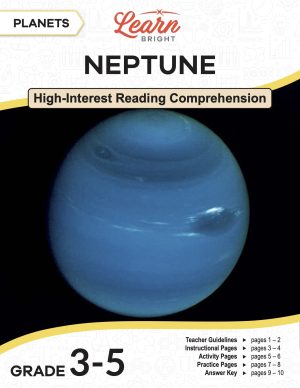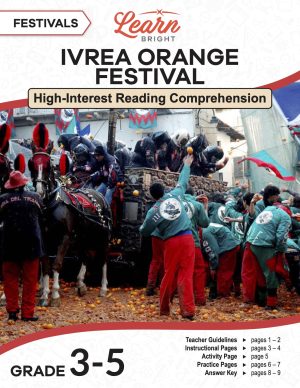Description
What our Estimating – Grades 4-6 lesson plan includes
Lesson Objectives and Overview: Estimating – Grades 4-6 explores how to estimate for multiplication and division, as well as to determine distance and other measurements. At the end of the lesson, students will be able to use estimation for multiplication and division, as well as use it to determine distance and other measurements. This lesson is for students in 4th grade, 5th grade, and 6th grade.
Classroom Procedure
Every lesson plan provides you with a classroom procedure page that outlines a step-by-step guide to follow. You do not have to follow the guide exactly. The guide helps you organize the lesson and details when to hand out worksheets. It also lists information in the blue box that you might find useful. You will find the lesson objectives, state standards, and number of class sessions the lesson should take to complete in this area. In addition, it describes the supplies you will need as well as what and how you need to prepare beforehand.
Options for Lesson
Included with this lesson is an “Options for Lesson” section that lists a number of suggestions for activities to add to the lesson or substitutions for the ones already in the lesson. Two suggestions to adjust the lesson activity include having your students vote for the best planned meal and having students and parents work together to plan a meal for a local homeless shelter. If you’d like to use an alternate question to close the lesson, you could consider using the following question: What wrong estimate would most likely cause the most problems for a city? For the lesson closing, you may also give students a second chance to guess the number of candy pieces.
Teacher Notes
The teacher notes page includes a paragraph with additional guidelines and things to think about as you begin to plan your lesson. This page also includes lines that you can use to add your own notes as you’re preparing for this lesson.
ESTIMATING – GRADES 4-6 LESSON PLAN CONTENT PAGES
Estimate by Rounding Whole Numbers
The Estimating – Grades 4-6 lesson plan includes two pages of content. In our day to day lives, we usually need to find exact numbers and estimate every day. Estimation is when you find a number that is close to the right answer and can usually be completed quickly; they’re rarely the exact answer.
For basic estimation for adding, subtracting, multiplying, or dividing numbers, we usually start with rounding. The steps to round numbers to the nearest 1,000 are to first identify the place you would like to round. Next, look at the place value to the right and ask ourselves if it’s 5 or above or 4 or below. Then, we add (if above 5) or keep it the same (if 4 or below). Finally, change all other digits to the right to zero.
There’s a helpful rhyme that we can use to remember these steps: You look to the right, if it is five or above, give it a shove (add one). You look to the right, if it’s four or below, you keep it low (no change).
Because we can round every number, we can estimate the answers to all addition, subtraction, multiplication, and division problems. You just need to decide what place value to round to. For example, you might want to estimate the total number of students at your school, knowing that K = 138, 1st = 119, 2nd = 127, 3rd = 153, 4th = 131, 5th = 146, and 6th = 132.
You wouldn’t round each of these numbers to the nearest 100, because that would give you an estimated answer of 800 students. This is definitely too low, because every grade has more than 100 students. However, the estimate makes more sense if you round to the nearest 10 instead, for a total of 950. When you add the numbers together to find the exact amount, you get a total of exactly 946. Your estimate makes sense!
Another method you can use is Front End estimation. This is when you round to whatever number is at the front (the first digit). You don’t round to a special place value. One example of Front End estimation is 64,789 + 3,265 -> 60,000 + 3,000 = 63,000. You round only using the first digit.
More Estimation
When estimating, sometimes you will need to round fractions. For example, you can estimate the sum of 3/4 + 2/3 + 1/5. To estimate, you’ll need to think logically. Both 3/4 and 2/3 are below 1 and 1/5 is a small fraction, so you can guess that the total is less than 2. The exact answer is about 1-3/5. It’s important to remember that all fractions are close to 0, 1/2, or 1.
We can also round decimals just like we round whole numbers. You might need to round decimals when dealing with money, because we write money amounts with decimals. For example, you might want to buy five items at a store that cost $5.29, $4.89, $12.85, $6.25, and $8.49. To estimate, you might either round to the nearest dollar or nearest ten cents. However, remember that your estimate must make sense.
You might round each price to these amounts: $5.30 + $5.00 + $13.00 + $6.00 + $8.50. To find your total estimate, first add the dollars to get a total of $37. Next, add the cents to get 80 cents. Finally, add them together for a total of $37.80. The exact total is $37.77, so this was a good estimate. When estimating money, you should try to estimate a bit higher so you don’t overspend!
There are many different reasons for estimating. Sometimes you need to estimate a measurement, like the length and width of a room or the amount of paint you need to paint that room. Knowing how to estimate is a very useful skill. The more you estimate, the better you will get. Always keep in mind that estimates are not uninformed guesses, but are based on the information you have. If your estimate doesn’t make sense, try again!
ESTIMATING – GRADES 4-6 LESSON PLAN WORKSHEETS
The Estimating – Grades 4-6 lesson plan includes three worksheets: an activity worksheet, a practice worksheet, and a homework assignment. You can refer to the guide on the classroom procedure page to determine when to hand out each worksheet.
MEAL HOSTING ACTIVITY WORKSHEET
The activity worksheet asks students to imagine that they are hosting a meal for 57 homeless people plus everyone in their class. They must estimate the amount of food, drinks, desserts, plates, cups, bowls, forks, spoons, knives, napkins, and more they will need for the meal. They will also estimate the size and number of tables for everyone to sit it and the amount of time the dinner will take. Additionally, they will consider other details, like where the dinner could take place. They will write down the amounts for each item clearly and will finally create a flyer advertising the meal.
ESTIMATION METHODS PRACTICE WORKSHEET
For the practice worksheet, students will round, estimate, and solve problems using the given values. They will round to the nearest 100, using front end estimation, to the nearest 1000, and using an estimate only.
ESTIMATING – GRADES 4-6 HOMEWORK ASSIGNMENT
The homework assignment asks students to first use front end estimation to solve four word problems. Next, they will choose their own estimation method to solve three additional problems.
Worksheet Answer Keys
This lesson plan includes answer keys for the practice worksheet and the homework assignment. If you choose to administer the lesson pages to your students via PDF, you will need to save a new file that omits these pages. Otherwise, you can simply print out the applicable pages and keep these as reference for yourself when grading assignments.









